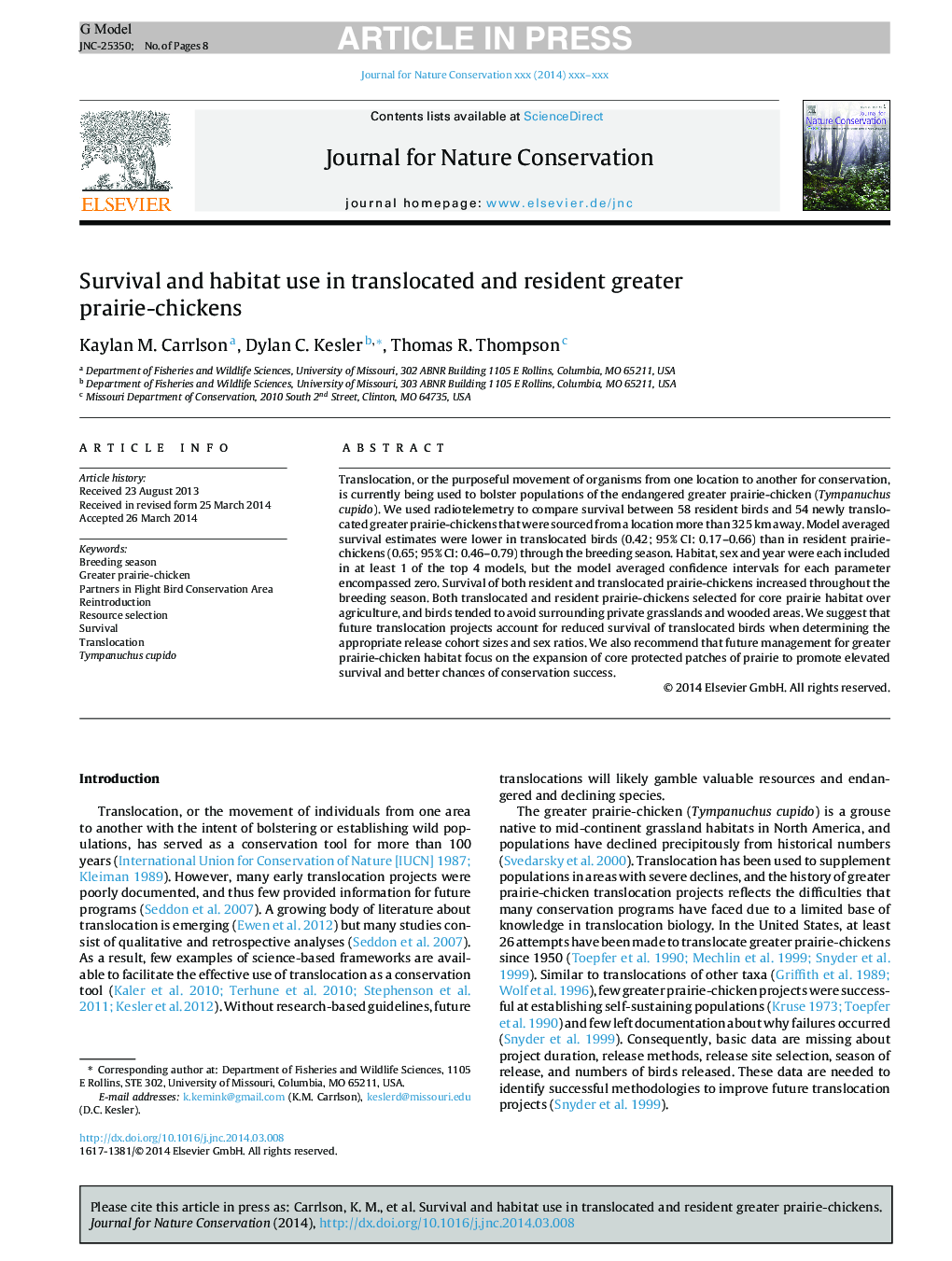| Article ID | Journal | Published Year | Pages | File Type |
|---|---|---|---|---|
| 6305458 | Journal for Nature Conservation | 2014 | 8 Pages |
Abstract
Translocation, or the purposeful movement of organisms from one location to another for conservation, is currently being used to bolster populations of the endangered greater prairie-chicken (Tympanuchus cupido). We used radiotelemetry to compare survival between 58 resident birds and 54 newly translocated greater prairie-chickens that were sourced from a location more than 325Â km away. Model averaged survival estimates were lower in translocated birds (0.42; 95% CI: 0.17-0.66) than in resident prairie-chickens (0.65; 95% CI: 0.46-0.79) through the breeding season. Habitat, sex and year were each included in at least 1 of the top 4 models, but the model averaged confidence intervals for each parameter encompassed zero. Survival of both resident and translocated prairie-chickens increased throughout the breeding season. Both translocated and resident prairie-chickens selected for core prairie habitat over agriculture, and birds tended to avoid surrounding private grasslands and wooded areas. We suggest that future translocation projects account for reduced survival of translocated birds when determining the appropriate release cohort sizes and sex ratios. We also recommend that future management for greater prairie-chicken habitat focus on the expansion of core protected patches of prairie to promote elevated survival and better chances of conservation success.
Related Topics
Physical Sciences and Engineering
Earth and Planetary Sciences
Earth and Planetary Sciences (General)
Authors
Kaylan M. Carrlson, Dylan C. Kesler, Thomas R. Thompson,
